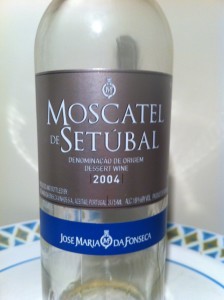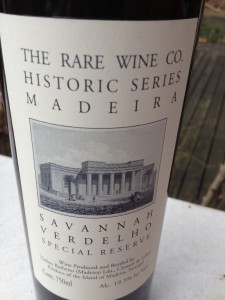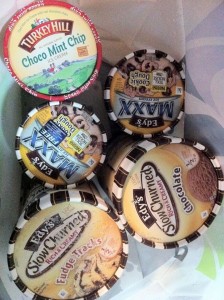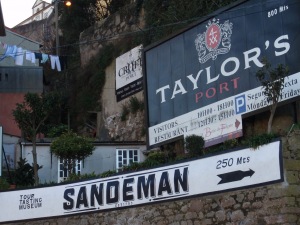 Top 10 Dessert Wines
Top 10 Dessert Wines
Time for a break, a year-end break from the countdown to 1,000. Because 2011 already has lots of Top 10 lists but doesn’t have a single one devoted to Dessert Wines. Because even the 12 days of Christmas need a break (Five GOLDEN rings!!!) before we get really excited about that partridge in the pear tree end of the song. Because 2011 had a snowstorm in October. And because this year, the year of the 2011, there is much to celebrate. Yankees losing to the Tigers in the Playoffs, dictators out of much of the Islamic world (hint hint Bashar), the expansion of the Peruvian food empire into New York City and lots of family visits and visiting family. Yup, a pretty good recap of the year… except:
Dessert Wines – simply the best
We haven’t even touched dessert wines yet. And dessert wines are really the pinnacle of wines. The wine that comes after the wine. The wine that led alpha men and kings to war, got them killed and then left all the beta men to mate with the hot-blooded Helens of Troy and Bernices left behind. Realistically though, dessert wine has created more widows than Samuel L. Jackson.
So, for 2011’s Top 10 List of Dessert Wines please see below. Note that these are dessert wines tasted in 2011, by participants alive in 2011 and that none of these wines were created in 2011. Many were harvested years or even decades ago, and some of the craftsmen may no longer be with us. Their memory lives on however, and we pour out a (minute) splash for them in memory of their contribution to the dessert wine culture of the world.
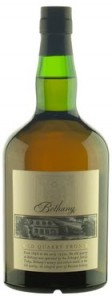 #10) Bethany Old Quarry Fronti (Barossa, Australia)
#10) Bethany Old Quarry Fronti (Barossa, Australia)
All kinds of conradictions come up in this sweet White Port. Starting right there, “White Port” doesn’t really resonate. Port is this thick, dark wine from Portugal that comes at the end of the night with fat-cat cigars or strinky blue cheese. It’s not from Australia and not clear. Most certainly it’s not white. And yet, this White Port from Barossa, Australia shines as an excellent type of the kind of lighter style White Port that can sometimes be found. Granted it’s the minority of the Ports that are out there and the Portuguese will be squawking that it’s not a true Port because the Aussies crafted it outside Portugal but for memorable sips of sweet oranges, this is an extremely reliable reminder to try new styles.
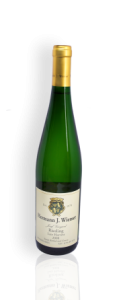 #9) Late Harvest Riesling – Josef Vineyard 2009 by Hermann J. Weimer Vineyard (Finger Lakes, New York)
#9) Late Harvest Riesling – Josef Vineyard 2009 by Hermann J. Weimer Vineyard (Finger Lakes, New York)
Parents usually lose the ability to create memories for their children sometime around the time they purchase their kids that first 10-speed bike. And what parent doesn’t crave those halcyon, pre-teen days? Fortunately, there’s a memory bottle parents can purchase for their children. This potion comes in a long green bottle filled with sweet citrus, green apples and fresh summer days. Best enjoyed on a summer afternoon in the Finger Lakes in the company of said memory-generating parents, it’s also available in most NYC wine stores. Even Fresh Direct has a non-dessert version of the wine.
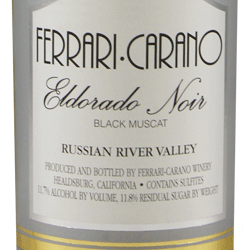 #8) Ferrari Carano Eldorado Noir 2010 Russian River Valley Black Muscat (Sonoma, California)
#8) Ferrari Carano Eldorado Noir 2010 Russian River Valley Black Muscat (Sonoma, California)
When in a cellar, the rule is: avoid being surprised. But for every Cask-of-Amontillado-esque rule, there’s an exception, and Eldorado Noir happens to be that cellar exception. Only available at the Ferrari Carano cellar since it’s made from one rare type of Muscat grape and the cellar people drink most of it, this is a wine that makes you rethink Muscat wine. Sure, it’s fizzy in Moscato d’Asti and smells like all kinds of grapes in Muscat d’Alexandria but this Muscat is that ugly duckling come to swan. Nothing golden nor shiny in this one – it’s black on black. Black color on black raspberry, that is. But when the ugly duckling comes sliding down the glass and you pop a chocolate covered blueberry into your mouth, you’re in heaven. In that moment, no Muscat, nay – no wine, can compare with the decadence of swimming around the duckling lagoon in Boston with a blueberry in one’s mouth and a sweet song in one’s Black Eldorado Heart.
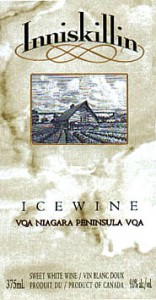 #7) Inniskillin Vidal Ice Wine – 2006 (Niagara, Canada)
#7) Inniskillin Vidal Ice Wine – 2006 (Niagara, Canada)
When you grow up in the frozen northern regions, you’re used to the cold. You do stupid things like winter camping – outdoors, with no tent, on the ground with a good sleeping bag and a tarp to keep you dry and allow you to melt the snow into a coccoon of warmth. At least, that’s the theory. You walk out onto Lake Michigan during the frozen months, you wear t-shirts when the weather gets above zero degrees celsius and you generally try to catch pneumonia as often as possible. But out of all those stupid, really cold months come some true moments of bliss. The sun blinds you through a million icicles all refracting light into tiny rainbows on the snow, adn you catch flashes of green and purple in between the snow that tells you spring is coming even before the first robin shows up. In between all those stupid, snowy moments, there are people out in those temperatures with frozen fingers and frost-bitten noses who are harvesting and pressing grapes to mash into ethereal golden droplets. This million icicle wine is Ice Wine and nobody does it better and more consistently than Inniskillin.
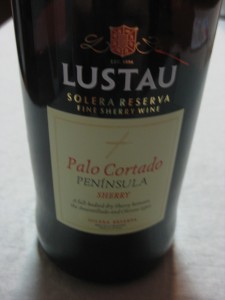 #6) Lustau PenÃnsula Palo Cortado Sherry (Jerez, Spain)
#6) Lustau PenÃnsula Palo Cortado Sherry (Jerez, Spain)
There’s no forgetting that first love. The one who you watched stars with or drove around in the pickup with for hours because the mall wasn’t really calling to either of you. Even when she’s more memory than flesh, more forgotten lyric than stable chorus, she remains your first love. Because she’s the one who taught you how to kiss and not tell, how to try out new things that you just plain hated, and what to say when nothing else made sense. Because that’s sherry, or at least my experience with it. Awful in many regards, and just plain icky in many others, but then there’s that one that doesn’t have cooties and smiles at you and you actually enjoy it. Palo Cortado from Lustau became that first love this year. Full of nuts, pecans and a bit of citric fun – this is a standout wine (not just Sherry, a standout wine). And that’s not because of the fascinating chemistry of Palo Cortado. And that’s not because of the unbeatable pairing of Palo Cortado and Old Amsterdam cheese, which must be my favorite pairing of 2011, hands down. This is because Sherry became something more than a cooties-infecting beverage, and you never forget your first Sherry.
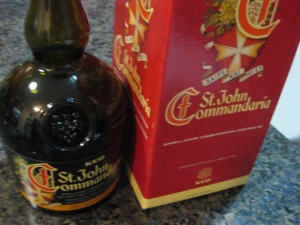 #5) Commandaria Keo St. John (Troodos Mountains, Cyprus)
#5) Commandaria Keo St. John (Troodos Mountains, Cyprus)
The discovery that Cyprus makes wine shocked me a bit this year. So, I bought a bottle and was shocked again when their wine turned out to be really delicious and have huge flavors of raisins. Combine that with intriguing historical anecdotes and it’s a dessert wine that deserves its status among the Top 10 of the year. Still haven’t tried other wines from Cyprus but am quite excited to see if they match this first one.
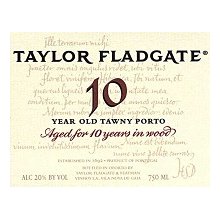 #4) Taylor Fladgate 10 Year Tawny Port (Douro Valley, Portugal)
#4) Taylor Fladgate 10 Year Tawny Port (Douro Valley, Portugal)
All brothers should visit Portugal. Because when brothers visit Portugal, they discover Oporto, a beautiful city in the north of the country that sits on both sides of the Douro River. And when brothers discover Oporto, they discover one side of that Douro River that has nothing but port lodges on one side. And in those port lodges, enormous tanks full of sweet, ancient port reside so someday a brother can buy a bottle for their brother, making him exceedingly happy. This Taylor 10 Year Port was the welcome-home bottle that we opened because it was his favorite of the trip. Silky and long-lasting was how I remembered the wine but sometimes evenings and wines blend together so much it’s hard to say whether one’s truly objective. Taylor 10 Year is etched forever as the Brother Timmy Welcome Wine. Drank on the day of the October Blizzard with ice cream and nothing but ice cream for dinner.
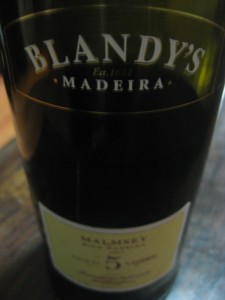 #3) Madeira Blandy’s 5 Year Malmsey (Madeira, Portugal)
#3) Madeira Blandy’s 5 Year Malmsey (Madeira, Portugal)
Everyday bottles of wine are extraordinarily difficult to find. It’s not like you just grab a cold beer from the fridge and 12 ounces later, the bottle’s empty. With wine, it’s 750ml so you better have a friend or two to assist on that bottle. If you cook for one, you’re looking at maybe one bottle a week. And committing to one bottle for a week causes commitment-phobes moderate angst. So, there’s the Bota Box method that works for long-term delivery. And there’s the Madeira method. Madeira, fortunately, doesn’t go bad. Ever. Wines will change after even a few days and even ports will start changing after a week, a month, who knows – but point being, they start to go bad too. Madeira just never does, and this Malmsey Madeira is my go-to Madeira. It’s sweet, cuts through chocolate cake like an acidic buzz saw and you can enjoy a glass on any day of the year. In a year of becoming slightly more obsessed with madeira, this staple in the cabinet is a Top 10 Dessert Wine.
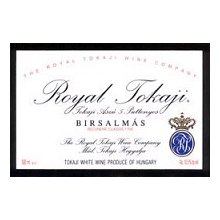 #2) Tokaji Aszu 5 Puttonyos “Red Label,” Royal Tokaji – 2007 (Tokaj, Hungary)
#2) Tokaji Aszu 5 Puttonyos “Red Label,” Royal Tokaji – 2007 (Tokaj, Hungary)
James Joyce once narcissistically stated that if Dublin disappeared from the face of the earth, it could be recreated just based on the description from his novels. One taste of this rightfully-famous dessert wine from Hungary, and you’re already recreating an apricot in your mind, you’re wishing you could sail away in a flying apricot next to James and his Giant Peach because you know that your Giant Apricot is rocking the melody and James and his Giant Peach are the harmonizing vocals on this dessert wine.
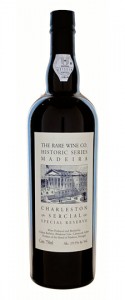 #1) Madeira Rare Wine Company Charleston Sercial (Madeira, Portugal)
#1) Madeira Rare Wine Company Charleston Sercial (Madeira, Portugal)
Madeira is fast turning into an obsession, even though I’ve only started scratching the surface of the incredible elixir known as Madeira. So when there was the chance to try the Sercial style of Madeira (the driest and lightest of the four typical styles), I jumped. What was supposed to be an afternoon of watching Buster Keaton with my brother became an afternoon of trying out numerous wines, the most built-up of which was the Sercial Madeira. Fortunately, the Sercial Madeira is a Taj Mahal of wines. By that I mean (borrowing poorly from Rushdie), that despite all the hype and the stories and the build-up of Sercial Madeira, the actual, physical “thing-in-itself” exceeds the mythology and the liquid in the glass is itself a transfixing, memorable experience. Share that type of experience with a brother visiting from Minnesota at the beginning of a long day of creating stories for future decades, and Sercial develops a new layer of mythology for future generations.
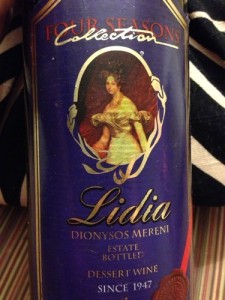 8 years a Life
8 years a Life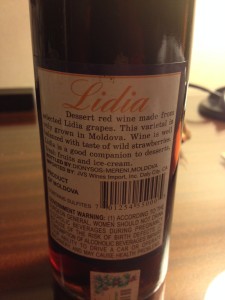 Detail Up!
Detail Up!